How do we really know what a composer looked like? Do we trust paintings and etchings? Do we believe people’s images as mediated through another’s hand? Before photography came into widespread use in the mid-19th century, the only way of truly capturing a person’s image was through creating a mask of their face.
A Life Mask is made by making a plaster cast of a person’s face while he’s still alive – the one detail is that you have to provide an air hole, you’ll end up with an inadvertent Death Mask. This can be an uncomfortable process. To keep the plaster sticking to your skin and hair, you have to protect them with petroleum jelly or a similar product. As the plaster cures and hardens, it grows hot. This is not a process for the claustrophobic!
One composer who had a life mask taken has given us a memorable image of his vitality: Beethoven
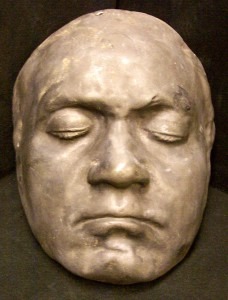
Beethoven: Life Mask from the Hutton Collection, Princeton University
We see that determined chin, the decisive mouth, and yet, because all of these masks have to be done with the eyes closed, the whole image seems to have a curious vulnerability.
When we compare that vital life mask with the death mask taken just after his death, we can see the changes made by his illness.
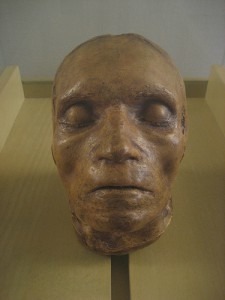
Beethoven: Death Mask
A young Viennese artist, Joseph Danhauser, made this mask 12 hours after the death of Beethoven. On the same occasion, he also made a drawing (now lost) of the deceased composer and later a lithograph of the drawing. The Beethoven House in Bonn makes an interesting point about Danhauser’s drawing: “Since the face of the dead Beethoven was covered by a cloth during the laying out, Danhauser’s illustration actually shows exactly what the visitors were not able to see.”
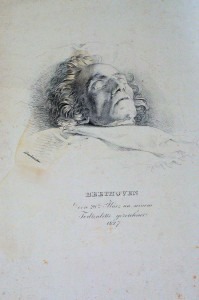
Josef Danhauser: Beethoven deathbed etching
The process of taking a death mask is illustrated here:
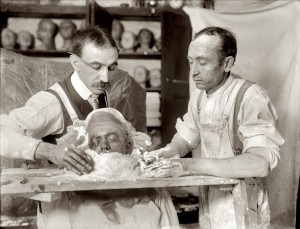
2 men in the process of making a death mask
These two workers are fortunate in that they can sit their subject up, so that the normal drag of gravity is reflected in the face. When a death mask has to be taken with a recumbent subject, the amount of distortion increased.
Composers who “live” through their death masks include: Joseph Haydn, Felix Mendelssohn, Franz Liszt, Frédéric Chopin, Richard Wagner and Gustav Mahler. The singer Maria Malibran also survives in her death mask and we can compare it very favourably to an image of her in life.
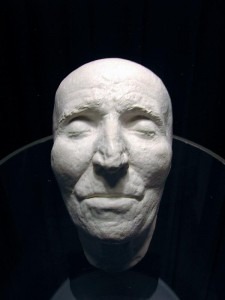
Joseph Haydn death mask
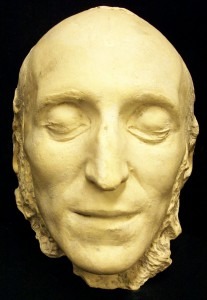
Felix Mendelssohn death mask
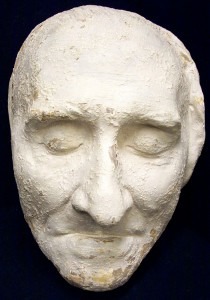
Franz Liszt death mask
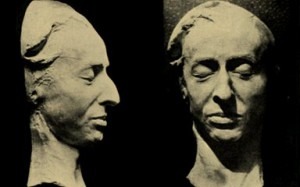
Frédéric Chopin death mask

Richard Wagner death mask

Gustav Mahler death mask
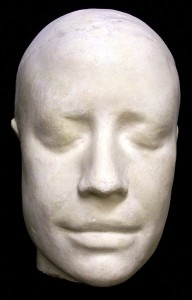
Maria Malibran death mask
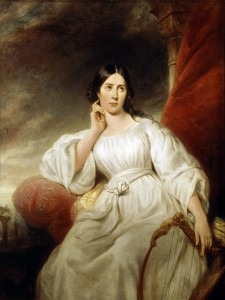
Henri Decaisne: Maria Malibran as Desdemona in Rossini’s Otello (ca. 1831)
To me, looking at all these faces, I have my doubts about the Wagner mask – it’s a little too sculpture-like when compared with the other masks. How would you like to be remembered?
For more of the best in classical music, sign up to our E-Newsletter

Schuberts life mask is held in the Curtis school of music USA – the skull was also exhumed and as far as I know, there have been no facial reconstructions carried out, as there have been for quite a few other famous composers
As we have Schuberts life mask as well as the exhumed skull – just wondering why there have been no facial reconstructions carried out as is the case with other famous composers ?
Very amazing to see how Beethoven was!!! And I agree about Wagner’s death mask: too much detailed.